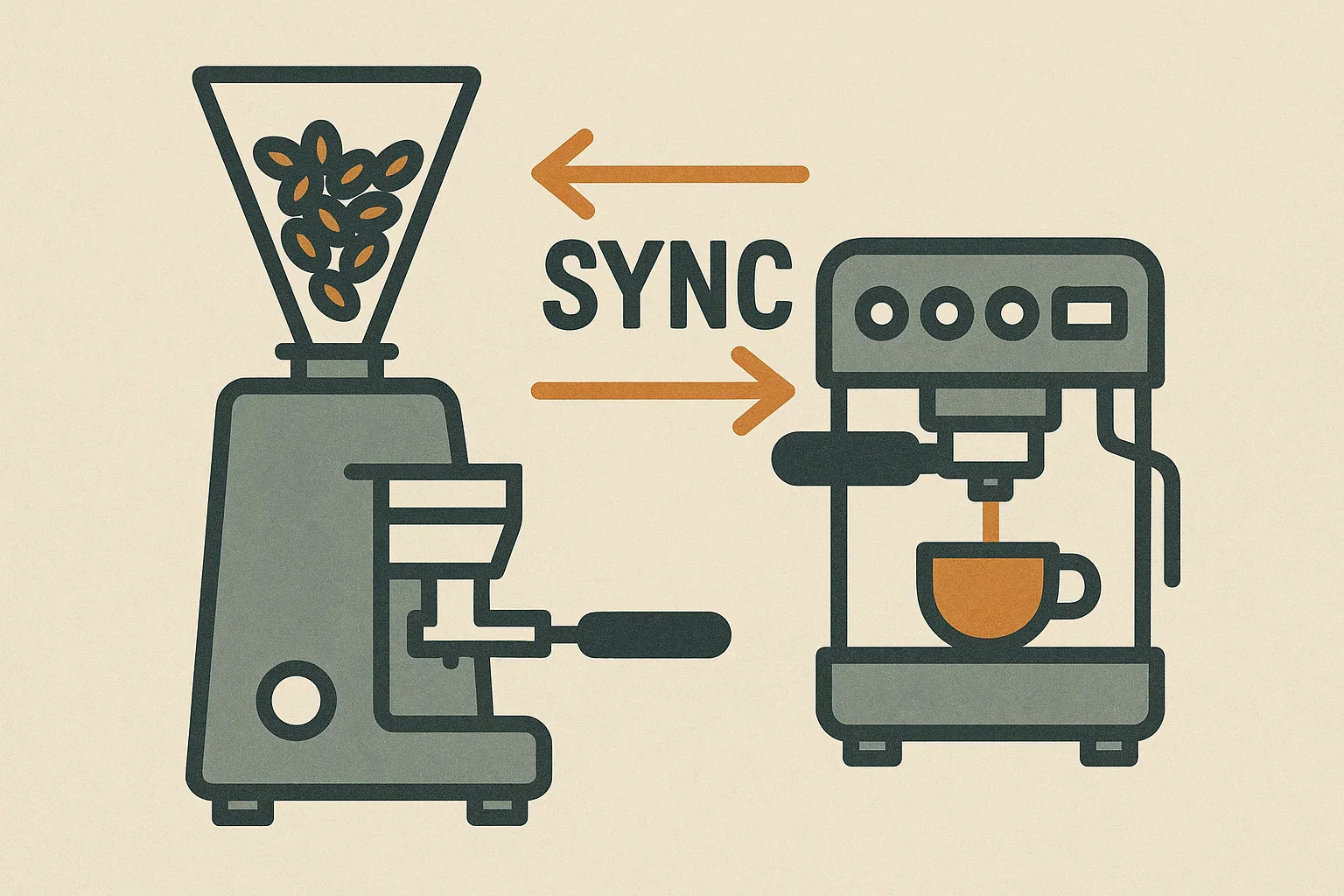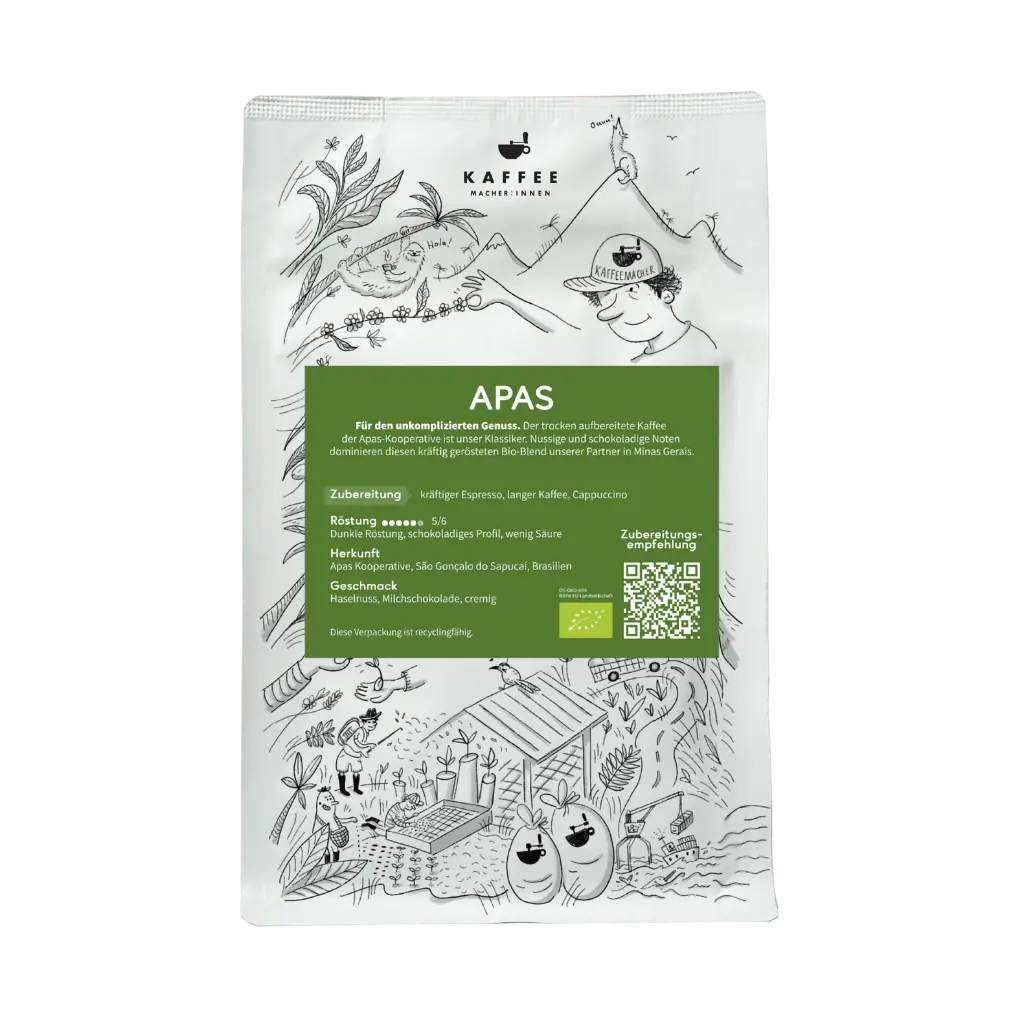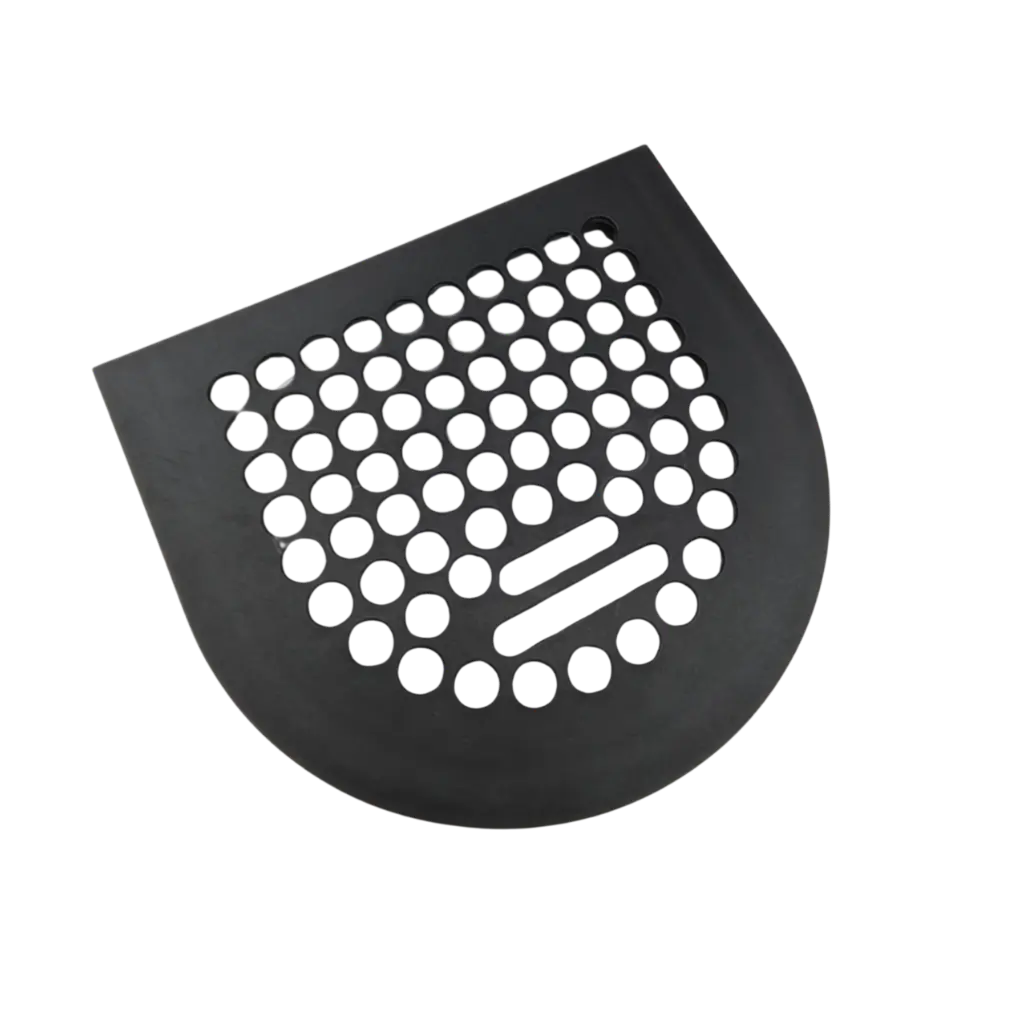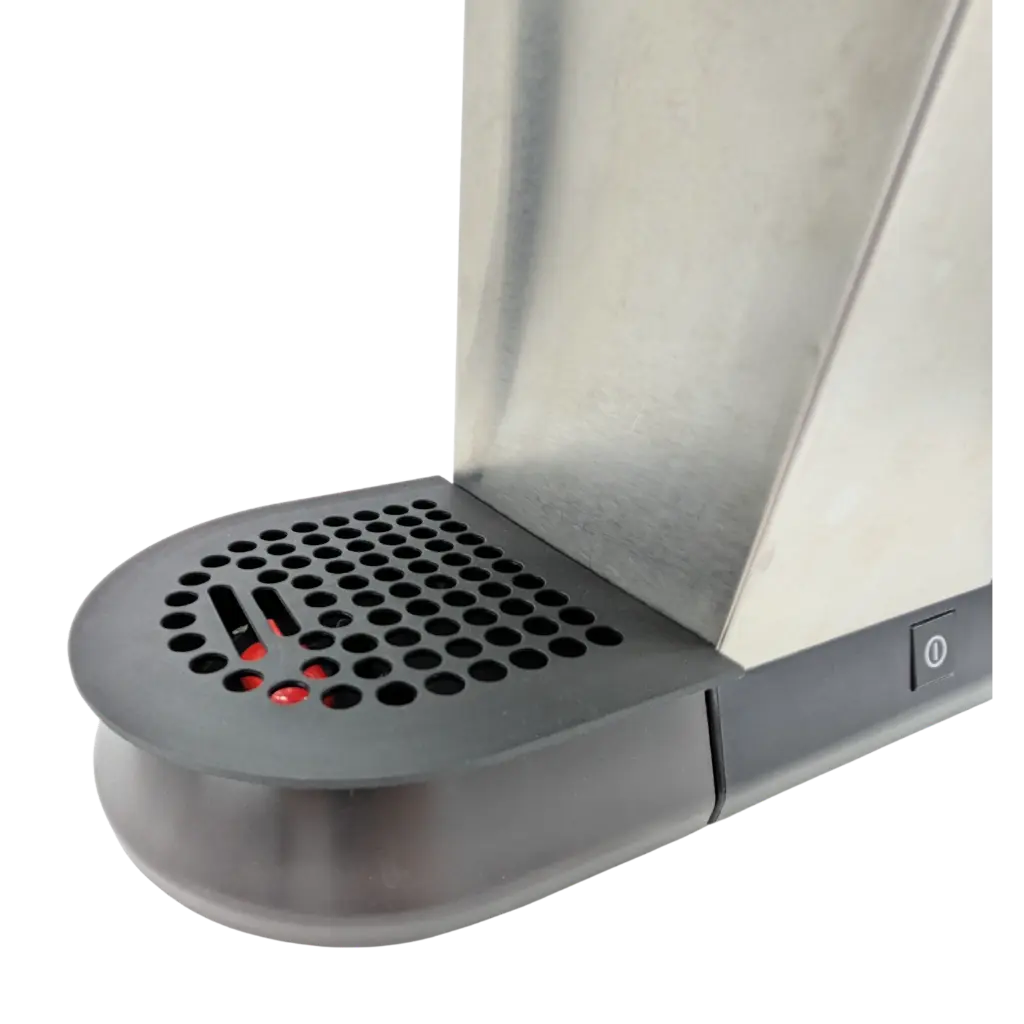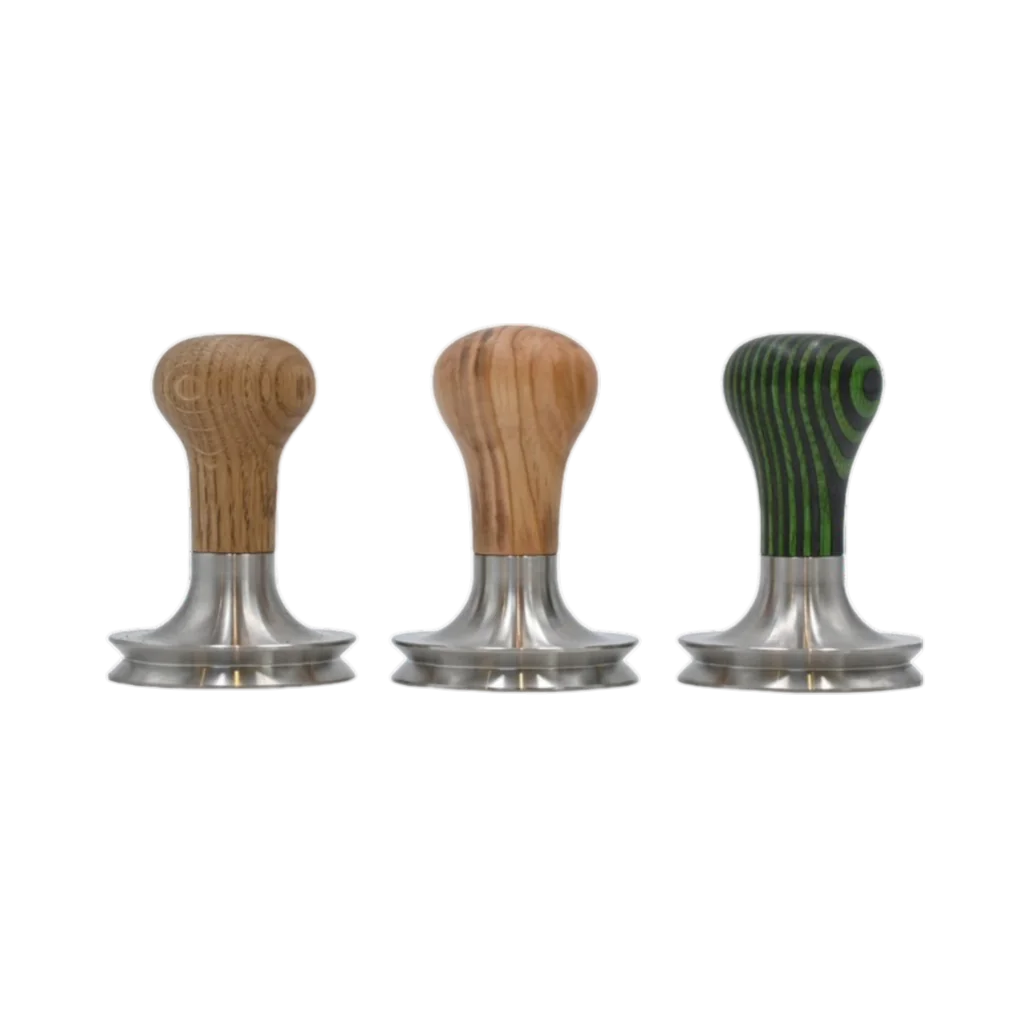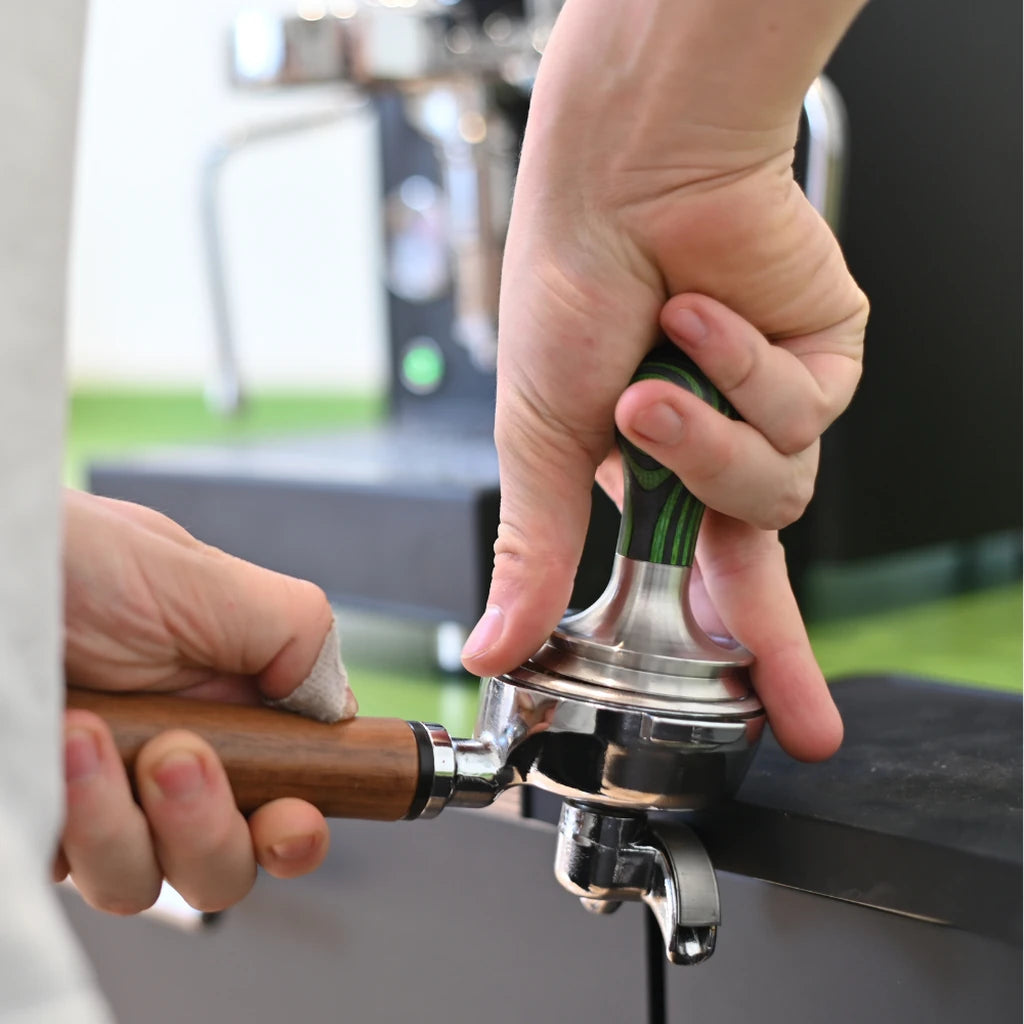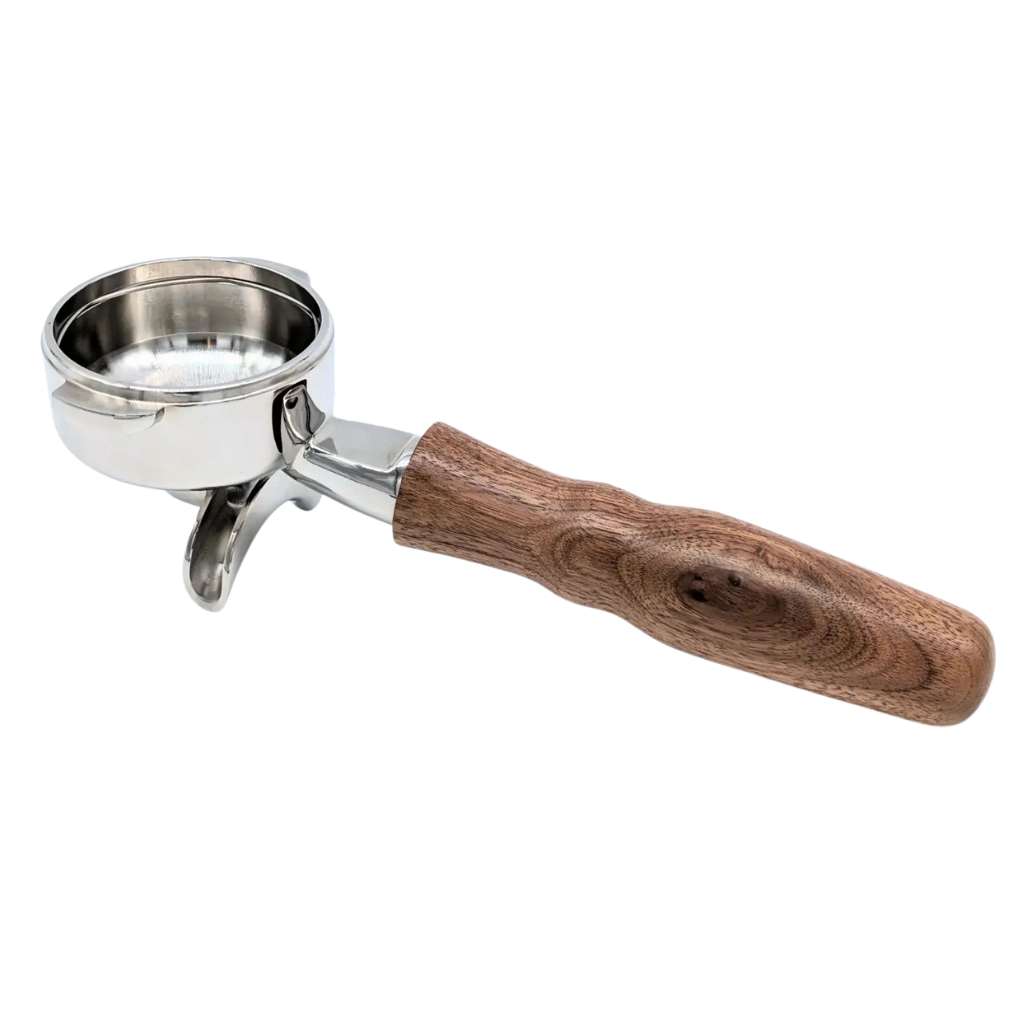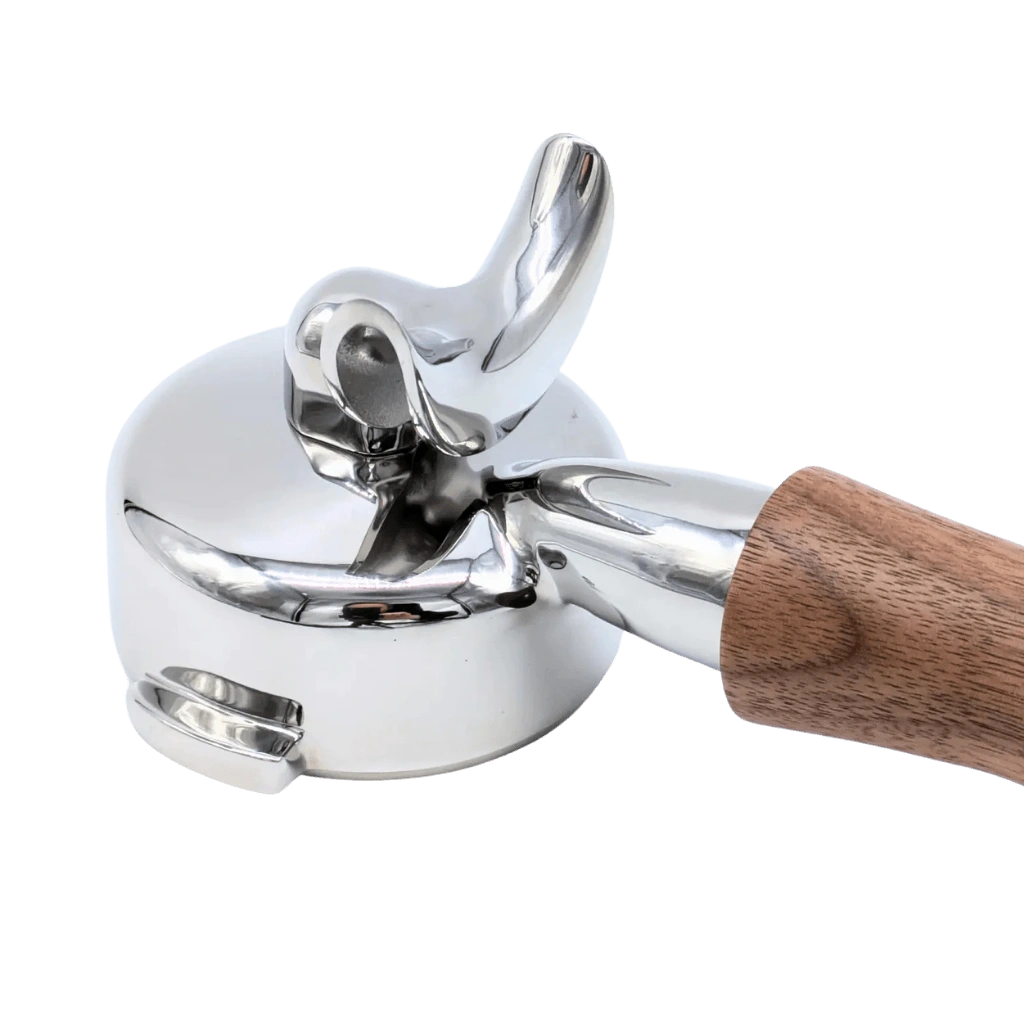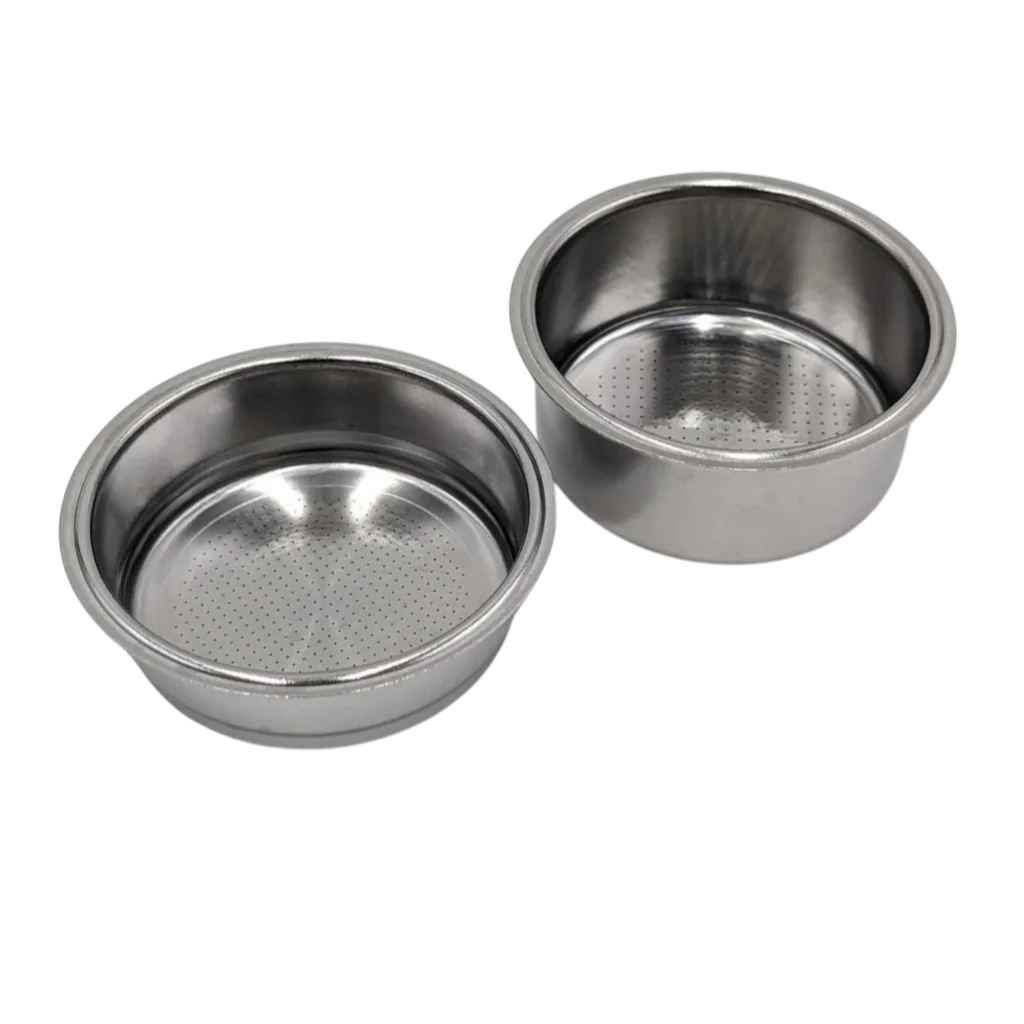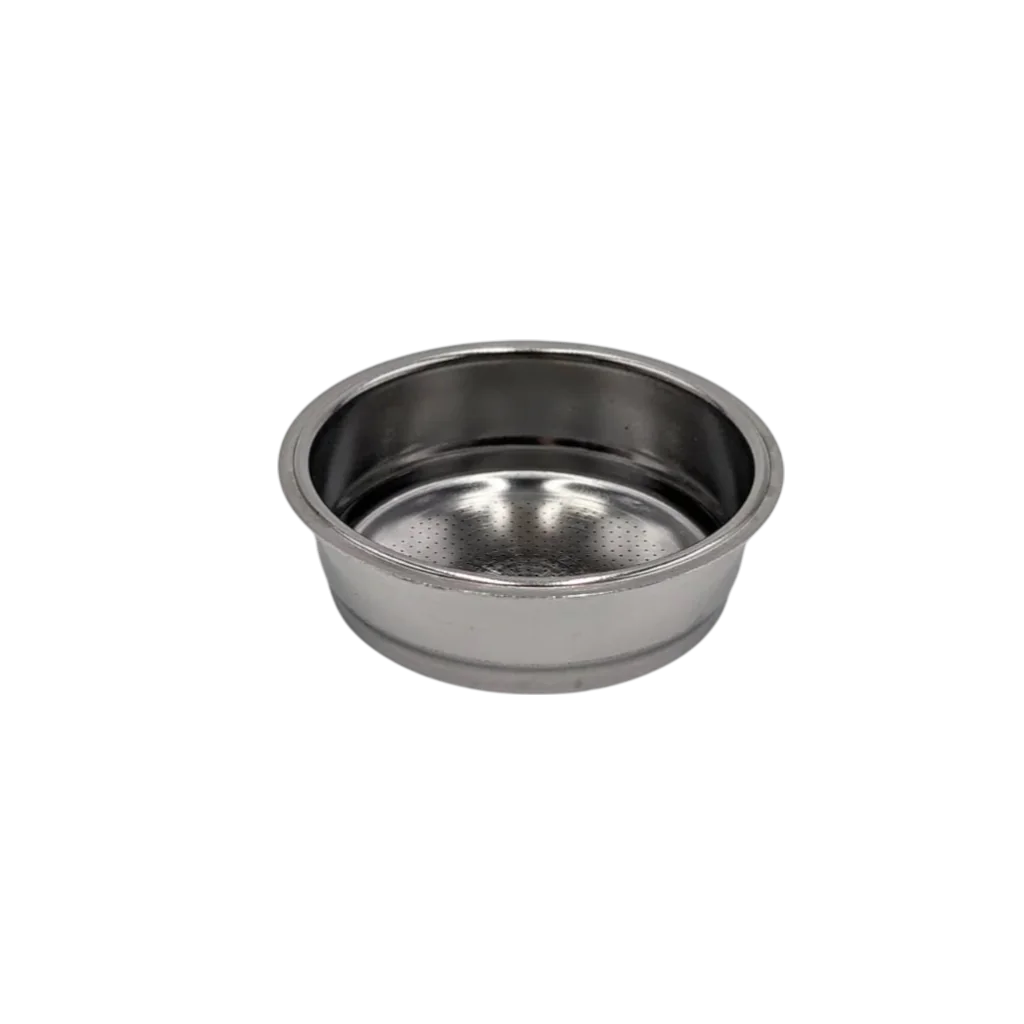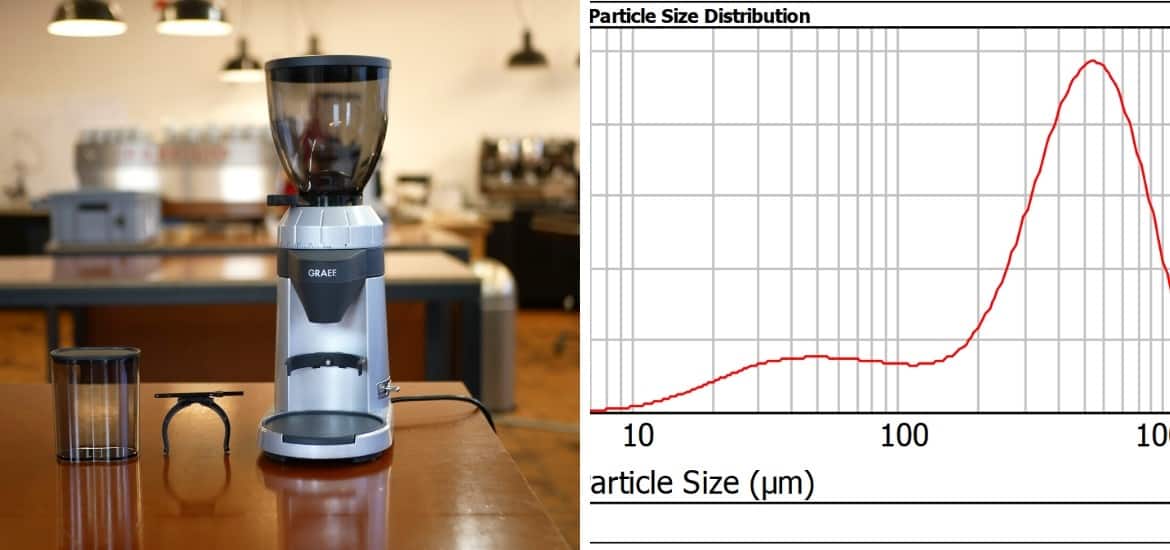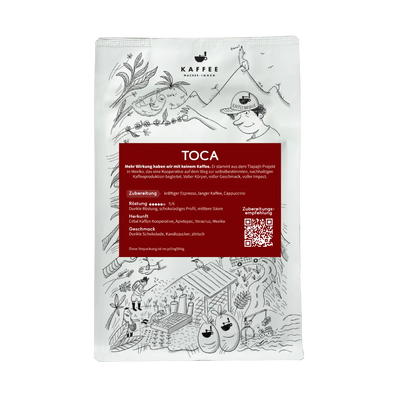The Graef CM800 is repeatedly cited as THE entry-level espresso grinder. At just under €130/150 Swiss francs, it also beats many other options on the market.
But what can this small grinder do, which is recommended by many forums and gets decent to good reviews in test reports?
We tested the GraefCM 800. After the first few hours with the grinder , our impressions weren't good. To be honest: we cursed and were frustrated, and the coffee didn't taste good.
If a device performs poorly or partially poorly in one of our tests, the following happens:
- We are testing even more intensively to objectively substantiate our impression.
- We look for ways to eliminate the weaknesses of a device or give you tips and tricks to help you achieve good results with the device.
Our review was first published on January 27, 2020. Two years later, the Graef returned to our table and we compared it with 24 other home espresso grinders . Both tests are included in this report and two videos.
Why do we test like this and why do we test at all?
Before I delve deeper into the grinder, I'd like to briefly explain why we test coffee machines and grinders in the first place. The Coffee Makers are a coffee school . We also roast and run a coffee farm in Nicaragua, as well as two cafés in Basel. This grinder test and all subsequent ones come directly from our Coffee Academy.
Our goal is to enable as many of you as possible to drink good coffee using simple means . We are convinced that if more coffee drinkers drink good coffee, the willingness to spend more money on good coffee beans will also increase, and the producer will benefit from this. As long as the espresso machines, grinders, or water limit (or impair) the quality of the coffee, no good coffee will be used.
So, if we recommend a machine to you, it's because we believe it will help you make great coffee. And if you need some tips, we'll provide them. Unlike many review portals, we don't make a living from you purchasing the machine through an affiliate link.
If you compare our articles, comparisons, and tests with traditional review portals, you'll notice that our tests are significantly more comprehensive. We don't sugarcoat anything so that you end up buying poor quality products later.
 We tested the Graef CM800 in good company: firstly, with the La Marzocco GS3 and secondly, next to a Cimbali M100.
We tested the Graef CM800 in good company: firstly, with the La Marzocco GS3 and secondly, next to a Cimbali M100.
Overall impression Graef CM 800
The biggest strengths of the small Graef CM 800 are its price and size. At just 13.5 cm deep, 23 cm wide, and 39 cm high, it fits into any kitchen niche. With its aluminum casing and approximately 2.6 kg weight, it also appears quite solid.
If you're good at adjusting the grinder, you can also make espresso with the Graef CM800! This grinder is an espresso grinder , unlike many other grinders in the sub-€200 range. Most grinders from Tschibo, Melitta, Rommelsbacher, and the like are filter coffee grinders and can't be adjusted to a fine enough grind! Don't let misleading reviews put you off your way.
Our conclusion in advance about the Graef CM 800
- Can you make espresso with the Graef CM 800? Yes, it's possible.
- Is it easy to use? No. Unless you're lucky and the grinding range is reasonably accurate, the Graef is very difficult to operate.
- Who is this grinder suitable for? Not for coffee drinkers with a high sense of taste. You should also be able and willing to use a screwdriver.
- The Graef CM800 is sensorially suitable for beginners and technically for advanced users.
Freshly grind espresso with the Graef CM800
Freshly ground coffee is always better than pre-ground coffee. Within just 15 minutes, a large portion of the coffee's volatile aroma components will have evaporated. Therefore, the first step to better coffee is to use a grinder that allows for minute-by-minute grinding.
A basic distinction is made between espresso grinders and filter coffee grinders. Espresso grinders allow for a finer grind setting, which is necessary to build up resistance in the espresso machine's portafilter.
If the grind isn't fine enough, the brewing water will circulate through the coffee too quickly. If an espresso is brewed in less than 20 seconds, the coffee won't be sufficiently extracted. The espresso will taste sour, harsh, and watery. Therefore, it's very important to make sure the grinder you choose is fine enough for espresso.
The Graef CM 800 does just that. It grinds finely enough, making it suitable for espresso. It's the most affordable espresso grinder we've tested so far. Espresso tastes much better with the Graef CM 800 than with pre-ground coffee.
But how does the quality of the espresso compare to other espresso grinders?
Can something so cheap be tasty?
We put many hours of work into testing the Graef CM800. This was due to the complex grind setting and because we weren't satisfied with the resulting taste.
First, I tested the grinder. Then, professional barista and vice-champion barista Michel Aeschbacher worked with it. We brewed espresso, but none of them really impressed us. To rule out the possibility that the espresso machine was limiting the flavor, we used a professional espresso machine (La Marzocco GS3/Cimbali M100) that was as expensive as a small car. The espresso was our standard Dreispitz coffee , which we serve in our Kaffeemacher Café in Basel train station.
The espresso was both bitter and had a higher level of aggressive acidity. We brewed the espresso using a classic brewing ratio of 1:2.5. 18 grams of coffee in the portafilter yielded two espressos, each weighing 22.5 grams, with a brewing time of 25 seconds.
To verify the results, we compared the espresso with three other grinders (Sage Smart Grinder Pro, Eureka Mignon Perfetto, Niche Zero) using the same parameters using a triangle method. In the triangle method, three cups are compared. Two of these cups have the same taste, and one differs. The different cup is marked on the bottom, invisibly for the taster.

The test subject is tasked with finding the different cup in each case. In this case, we duplicated the test series and added the additional task of saying which cup tasted worse.
Across all 6 sets, I found the different cup and selected the ones that tasted worse than the extractions from the Graef CM 800.
But why does the Graef CM 800 have trouble keeping up with the other grinders in terms of taste?
Ground coffee distribution as a reason for poor espresso
It was a reasonable assumption that the grain size distribution of ground coffee varies greatly. Every coffee grinder has a scattering of particles of various sizes. This is also the case with the Graef CM 800. The question was simply how pronounced the number of different sizes is. The better the grinder, the larger the number of grain sizes in the desired range. If there are many fine particles and, above all, many coarse particles next to the main peak, these will extract differently than the desired particle size.
 Depending on the particle size, it is easier or more difficult for the brewing water to effectively extract the ground coffee. Finer particles extract significantly more easily than coarser particles.
Depending on the particle size, it is easier or more difficult for the brewing water to effectively extract the ground coffee. Finer particles extract significantly more easily than coarser particles.
With smaller particles, it's much easier for the brewing water to penetrate the coffee grain and extract everything. With larger particles, the effort is significantly greater, and only a limited amount of extraction is achieved.
So, we're talking about under- and over-extraction here at the macro level! It's not about whether an entire cup of coffee tastes over- or under-extracted, but rather how many coffee particles are well extracted overall. The fewer the particles are of the same size, the more coffee particles are under- and over-extracted. Under-extraction tastes sour, over-extraction tastes bitter. Didn't we already write about that today? Exactly, earlier in the flavor description of the espresso we brewed with the Graef CM800.
 Particle distribution of the Graef CM800. The above curve illustrates the particle distribution curve of the Graef CM800. The x-axis indicates the particle size in microns, and the y-axis indicates the volume of the corresponding size in percent. It is typical for a mill to have a distributed curve. This usually manifests itself in two main peaks—a fine and a coarser one.
Particle distribution of the Graef CM800. The above curve illustrates the particle distribution curve of the Graef CM800. The x-axis indicates the particle size in microns, and the y-axis indicates the volume of the corresponding size in percent. It is typical for a mill to have a distributed curve. This usually manifests itself in two main peaks—a fine and a coarser one.
Before we take a closer look at the curve, let's briefly explain our next steps. At our Coffee Academy, we don't have the capability to perform particle analysis using image or laser analysis. These devices are incredibly expensive, costing in the six-figure range. However, there is a simpler method: a laboratory sieve. Michel Aeschbacher examined the proportion of the finest and coarsest particles using two micron sieves, size 800 and 400.
He put 50 grams onto the sieves. His result looked like this:
- 19.06 grams – Coarser than 800 microns
- 20.69 grams – Coarser than 400 microns and finer than 800 microns
- 8.28 grams – Finer than 400 microns
The rest got stuck somewhere in the sieve. But the numbers are clear enough. The typical espresso peak is somewhere between 300 and 600 microns. The Graef produces quite a bit that's coarser. Some particles are literally the size of sugar grains. While very fine particles certainly have a role to play in espresso extraction, coarse grains are a real problem. Fine particles sit among the larger ones and help build up sufficient resistance.(1) Coarse particles cannot be successfully extracted in the short brewing time of espresso extraction (approx. 25 seconds) and therefore contribute significantly to unpleasant under-extraction acidity. In addition, they facilitate channeling because they make it difficult to form a compact coffee bed.
 Front left coarser than 800, right between 400 and 800, and rear finer than 400. Espresso extraction time: 25 seconds, 50 grams.
Front left coarser than 800, right between 400 and 800, and rear finer than 400. Espresso extraction time: 25 seconds, 50 grams.
Grinding degree analysis by laser and image capture
After the sieve test, we wanted to have our results externally verified. Coffee professional and roaster Benjamin Schütz helped us with this.(2) I also spent a day with the company Symphatec, comparing very different grinders and grinds. This helped me better understand the specific surface area of ground coffee.
I set the espresso on six grinders so that it would deliver a final cup weight of 50 grams in as close as possible to 25 seconds using 18 grams of coffee. I ground 200 grams of coffee at this setting from the following grinders as a test.
Anfim Practica as a professional benchmark, Eureka Mignon Perfetto, Macap M2D, Sage Smart Grinder Pro, Sette 270wi, Graef CM800.
The analysis of the ground material revealed the following picture:
 Comparison of particle distribution of 6 espresso grinders.
Comparison of particle distribution of 6 espresso grinders.
Feel free to use this when linking to this article.
This image clearly shows that the Graef CM800 (dark blue) has the lowest peak of all the grinders tested. It is also the broadest and, along with the Sette 270wi, has the highest proportion of coarse particles.
This visual representation explains quite well what we experienced sensorially with the mill. The comparative extraction measurements also support the low extraction score.
Lowest strength and extraction evaluation on the Graef CM800
Using the values mentioned above, I adjusted the espresso, took the grinding samples and, of course, also compared the strength and extraction .
Starch is the concentration of dissolved particles and is expressed in TDS% (total dissolved solids). The starch can be measured with a refractometer. measure.
If you know the strength, you can calculate the extraction based on the amount of coffee used and the weighed amount of espresso (volume of espresso in grams * TDS % / amount of coffee powder used).
I came to the following conclusions.
| Name Mill | Powder quantity | Time | Volume/g | TDS | extraction |
| Sage Smart Grinder Pro | 18.00 | 24.50 | 49.8 | 7.50% | 20.75% |
| Graef CM 800 | 18.00 | 25.50 | 49.6 | 6.52% | 17.97% |
| Eureka Mignon Perfetto | 18.00 | 25.50 | 49.8 | 7.10% | 19.64% |
| Macap M2D | 18.00 | 24.50 | 49.6 | 7.64% | 21.05% |
| Page 270 | 18.00 | 25.00 | 49.4 | 6.95% | 19.07% |
| Anfim Practica | 18.00 | 24.50 | 49.2 | 7.88% | 21.54% |
The Graef CM 800 has the lowest strength and extraction. This also corresponds to the sensory description I observed during the tasting. The lower strength is reflected in the same sensory characteristics: the espresso tastes more watery and less creamy, and more filling in the mouth than the other espressos. The lower extraction is reflected in the already described more pronounced acidity.
Mill test 2022 - Graef CM800 again under the microscope
As part of our current espresso grinder test series, we returned to the lab with seven samples of the Graef CM800. The results confirmed our previous measurements. Of the entire field of 24 espresso grinders, the Graef CM800 achieved the third-widest coarse peak and a correspondingly low peak. This reflects the wide variation and demonstrates how difficult it is for the Graef to grind coffee particles precisely.

The difficulty of using the Graef is also evident in another category. The particle distribution curve shown above essentially shows the same grind setting four times. In reality, the grind settings differ significantly each time.
The following list reflects the data that led to the graph shown above. In all four key metrics, the numbers jump from reference to reference.

In the context of all other grindings, the following graphic also shows that the Graef CM800 falls behind in the field of better grinders.

Operation and grinding adjustment of the Graef CM800
Up to this point, I've already described the grinder's performance in detail, but I haven't yet discussed the grind setting. This is a very important function, because the grind setting also controls the espresso's runtime. The finer the grind, the greater the resistance for the brewing water, and the longer the espresso runs. The coarser the grind, the faster the water rushes through the coffee grounds, and the faster the espresso is in the cup.
 Grinding degree adjustment of the Graef CM800
Grinding degree adjustment of the Graef CM800
The Graef CM800 has a grind setting from 0 to 40. This doesn't mean much at first glance. The key question is how much the grind can actually be adjusted. The external adjustment is very simple and can be easily performed by any user.
However, we encountered the problem that we couldn't achieve an acceptable result with the 40 settings. Our espresso finished within 12 seconds, even with the finest grind. This could be due to a lighter roast or a different density due to the height of the grinder. In any case, the espresso finished much too quickly.
The solution is to fine-tune the internal adjustment of the grinding disc. To do this, the grinder must be opened. Then, two small screws can be removed from the upper grinding disc insert, allowing you to adjust the grinding to a finer or coarser setting. Watch our video for more information.

Otherwise, what happened to us the first time we changed gears will happen to you. If you don't reinsert the burr insert correctly, the grinder won't just not implement your desired setting—it will operate at a completely different level (much coarser).
We couldn't figure out how to do it from the instructions themselves. A YouTube video from Graef itself finally explained how it works. We think the whole grinder adjustment process is a real no-go. The outer adjustment is easy to use. But if you don't happen to land exactly in that range, then the screwdriving begins.
This really isn't a good solution at all. Other machines, such as the Sage Barista Express , also sometimes require readjusting the grinder. But there, it can be done without a screwdriver, and, most importantly, inserting the cone is self-explanatory.
In any case, our mood wasn't exactly great after adjusting the grinder, and we've certainly adjusted many grinders. For these reasons, we don't recommend these grinders to anyone new to espresso making. The potential for frustration is too high, in our opinion. We opened and unscrewed the grinder a total of four times until we were satisfied with the basic grind adjustment.
The Graef CM has an on/off button and grinds continuously. The grinding time cannot be programmed, so the ground coffee must be weighed manually.

“Dead space” for coffee powder
Many other reviews also address this point—but for us, it's almost irrelevant compared to the ones mentioned above. Dead space is the coffee grounds that aren't dispensed after grinding. It accumulates at the grinder's outlet and is only pushed out during the next grinding cycle by the coffee grounds pushing from the back.
This ground coffee isn't fresh and therefore influences the flavor. Depending on how long it's been since the last grinding, the coffee will have slight aging notes.
The Graef CM 800 has a large dead space in the dispensing area due to its relatively large spout. Depending on the grind setting, up to 8 grams of ground coffee can accumulate there (the finer the grind, the more). This can also lead to uneven extraction.
However, by tapping the grinder vigorously, the coffee can be removed from the dead space before or after grinding.

Conclusion on the Graef CM800 and who is this grinder for?
As mentioned at the beginning: the Graef CM800 grinds espresso-fine. No other grinder at the price can do that. This is the small grinder's biggest advantage. But it's a problematic grinder for beginners.
If the preset outer grind range doesn't match the coffee beans you're using, adjusting the grinder becomes very time-consuming. If you like trying different beans, then good night.
You can make espresso with the Greaf CM 800. However, compared to other grinders and the coffee beans we tested, the grinder clearly doesn't reach the full potential of the coffees.
We don't recommend using the grinder, especially for high-quality, more complex coffees. These already have a relatively high acid content, which is further amplified by the under-extraction.
Due to its price, the Graef CM800 is the logical alternative to the Delonghi Dedica EC 685 , which many use as an entry-level espresso machine. Of course, espresso can be made in this combination. But we predict a difficult relationship because neither partner truly provides support.
Especially if you're new to espresso, it's important that your equipment does its job. Only then can you be sure you've done everything right. For this reason, we recommend a grinder that runs solidly and reliably, especially when combined with an espresso machine like the Dedica EC 685.
Footnotes:
1) In modern espresso preparation, fines are sometimes deliberately omitted and a higher main peak is used instead. However, this also requires fewer bolders.
2) Many thanks at this point to the company UCC, whose device Benjamin was allowed to use for the analysis.
![]()


